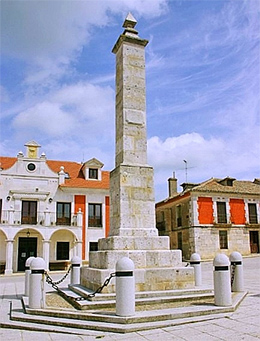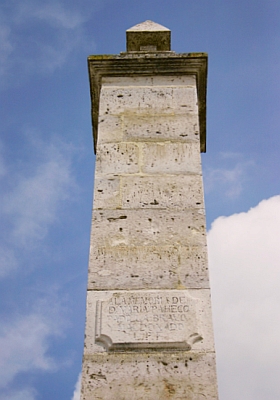Menú principal
- About Castilla y León
-
Geography and Population

-
Historical and cultural community

-
Autonomic institutions

-
Castilla y León awards

About Castilla y León

About Castilla y León
There is no doubt that nowadays the region's movement is linked to Castilla y León. However, it is an important event for the region's and Spanish history, as in that movement were involved many of the current bordering cities and regions of Castilla y León.
Which were the reasons for the Revolt of the Commoners? Within its great complexity, there were political and social reasons.

Some facts made it worse. He gave those Flemish important posts, for instance, in the Government. The situation was worsening when the King Charles I was appointed emperor, a position that foreboded long absences of the monarch, and the potential subordination of the Castilian interests to those from Flanders or from the Empire. This rejection to the policy and the king came from the cities of the Castilian plateau, that were afraid not only for the problems that could entail to Castilla the fact of being part of an international policy where the German Empire gave the orders, but also for the potential loose of the Government autonomy.
The social problems that motivated the creation of regions are difficult to explain. Each group of the Castilian society in the XVI century, took advantage of the rejection atmosphere to the young monarch to assert their particular demands. The high nobility wanted to keep their privileges and didn't agree with the lost of political power. Medium nobility wanted to recover the prominence that was losing in favour of merchants and the middle-class. The city's middle-class social groups were looking for some political participation, something only intended for urban nobility. All that has to be taken in conjunction with the struggle between important merchants and the industrialists.
The revolt, that ended in Villalar, started in Toledo. The whole scenario was a wide area: Tordesillas, Torrelobatón, Valladolid, Zamora, Salamanca, Toro, Segovia, Medina del Campo, Medina de Rioseco, Ávila... and Villalar. The movement takes place in the Castilian urban areas. The north of Spain, not very developed, and the south, controlled by the high nobility, didn't really take part.

Villalar monolith
The representatives of the revolted cities gathered in Ávila, where they created the "Junta Santa", and from there they sent the king a memorial with their complaints. Charles I managed to won the affection of many nobles, and in Villalar, the 23rd April 1521, defeated the commoners followers, that were mainly cities craftsmen and countryside peasants. The imperial cavalry killed nearly 500 people and took the main captains that had given rise to the revolt prisoners. Those captains were: Juan de Padilla, from Toledo; Juan Bravo, from Segovia, and Francisco Maldonado, from Salamanca. After a summary trial the next day, once they had assumed their responsibilities, they were killed.
The Castilla y León regional Government, in 1986, decided to establish the 23rd of April as the "Region's Day", due to the festive nature that the Villalar commemoration had been taking on.
The legislative text is in charge of reminding the traditional aspirations of the commemoration, that wanted that day to be "at the same time a tribute to the ancestors and a pledge before those that continue to have interest in improving the life quality of Castilla y León people (...)". That date, says the law, "has been kept in the collective memory of those that, aware of the significance that it had for its development determination, has always claimed it as a hopeful date for the recovery of its freedom and self-government in the solidarity and unity of Spain".